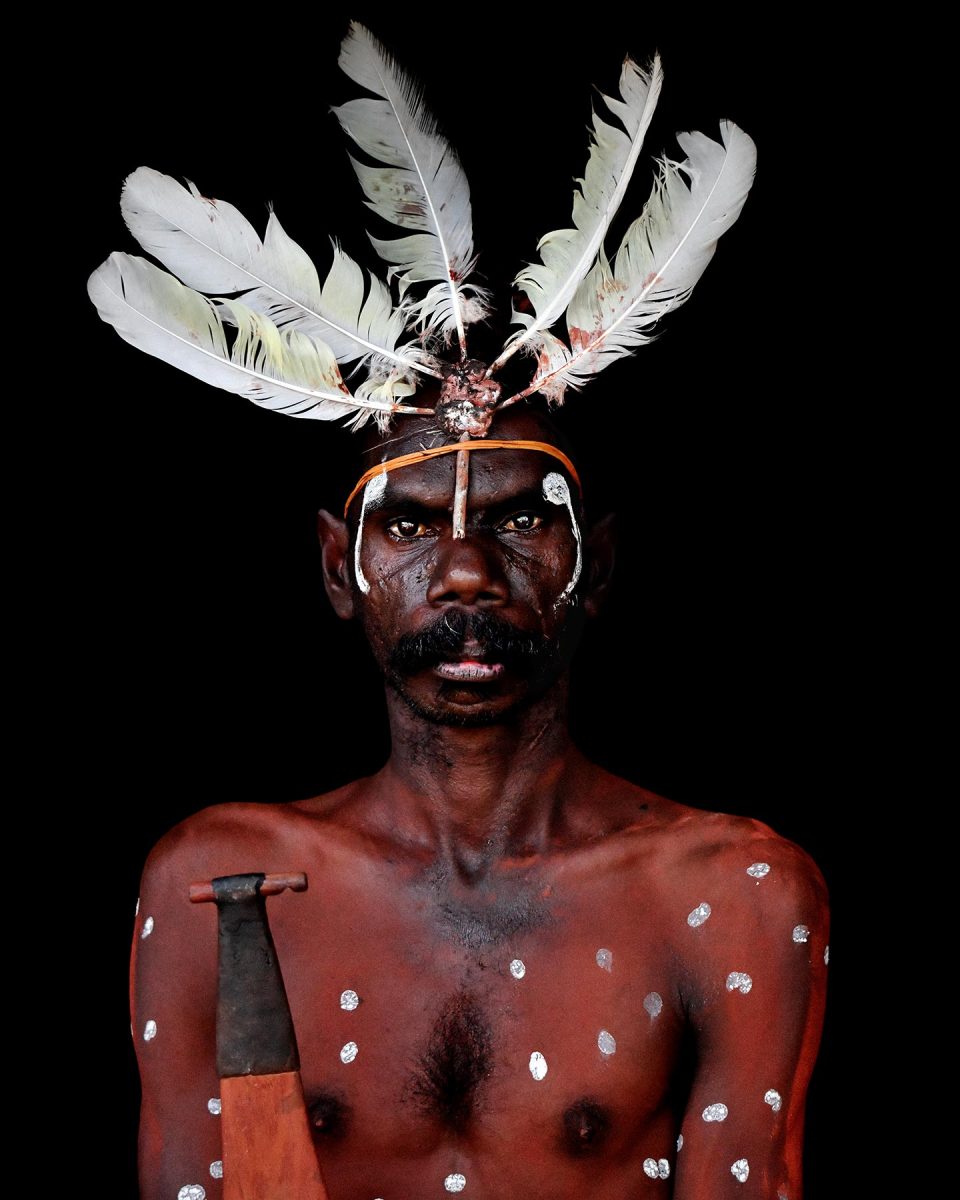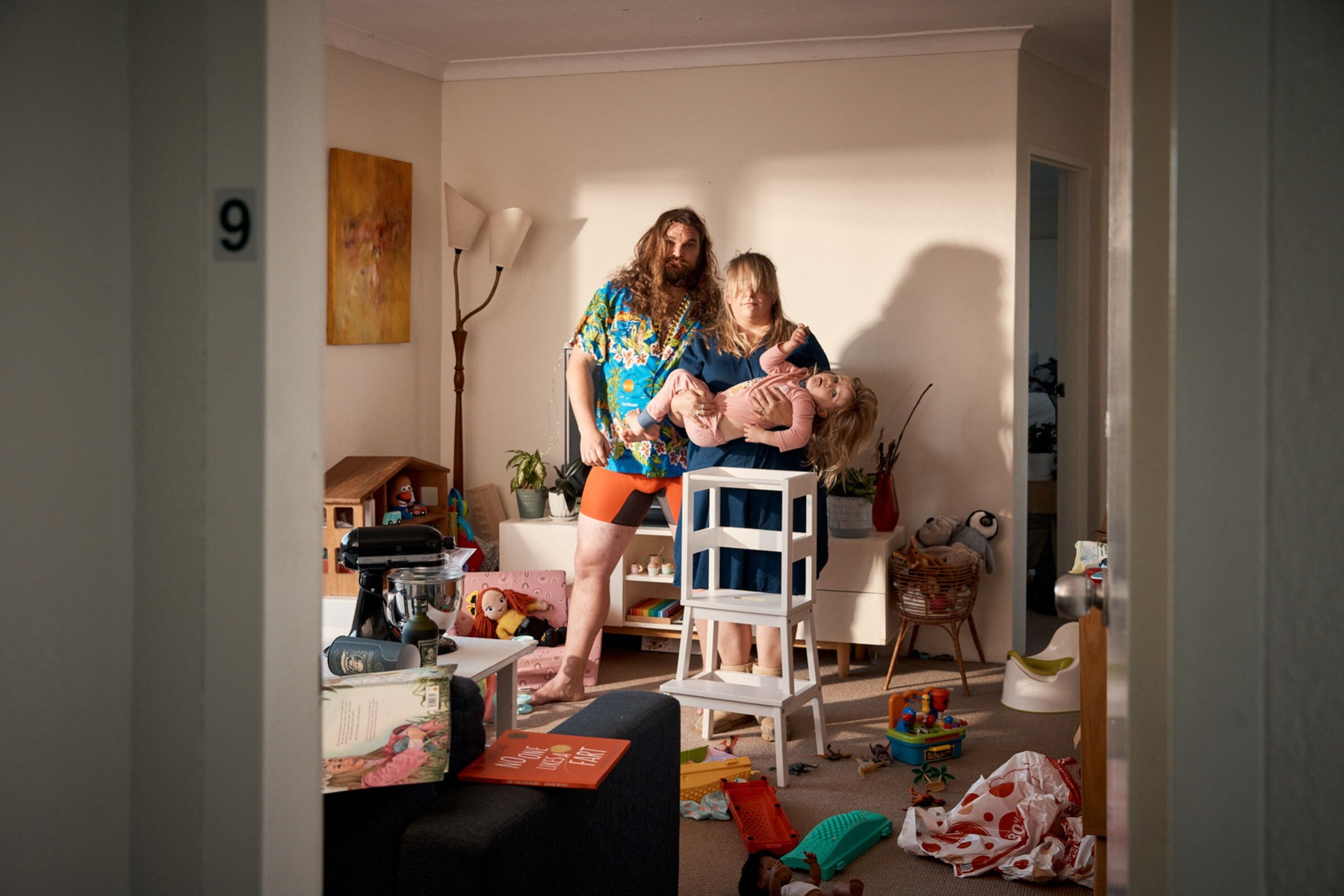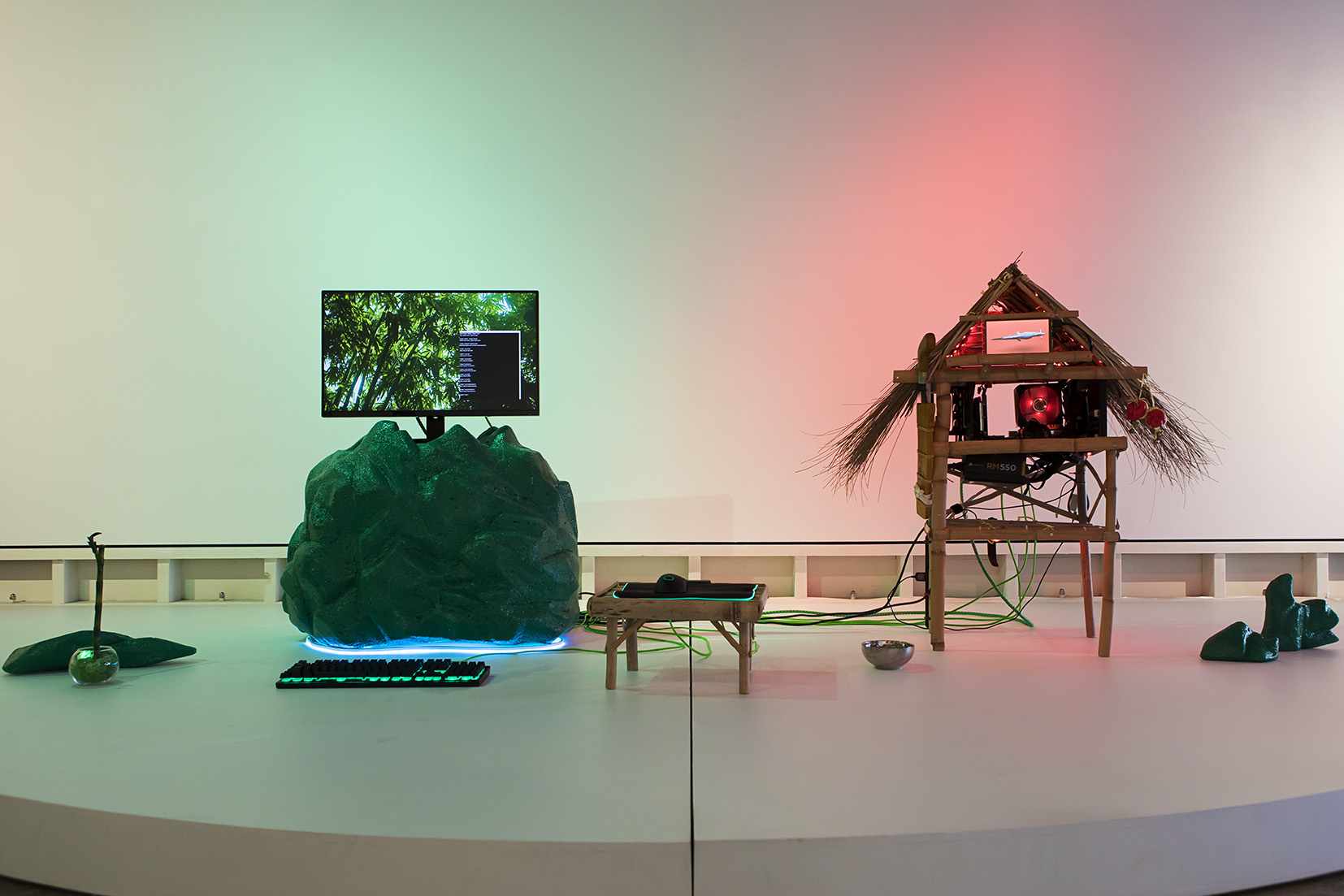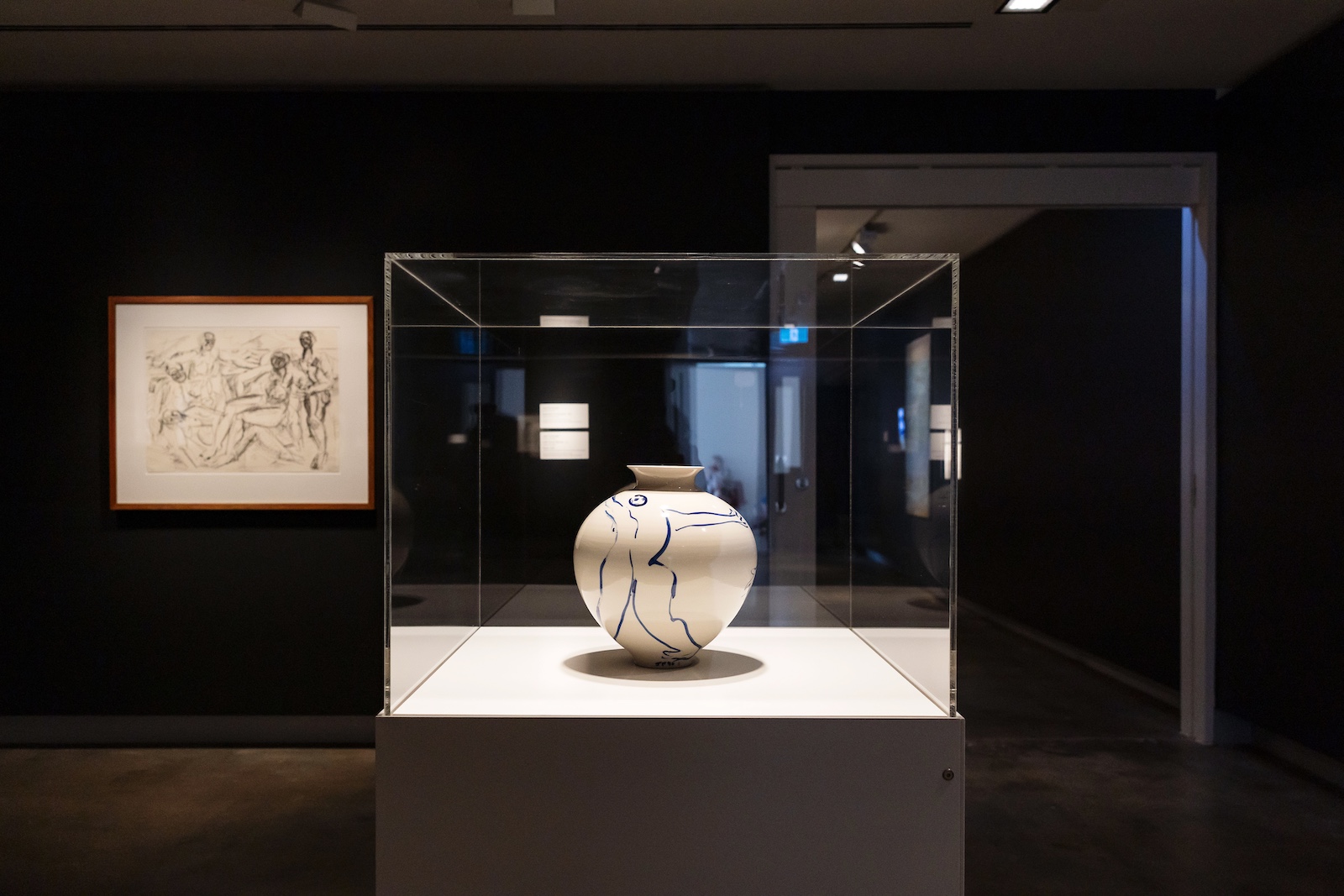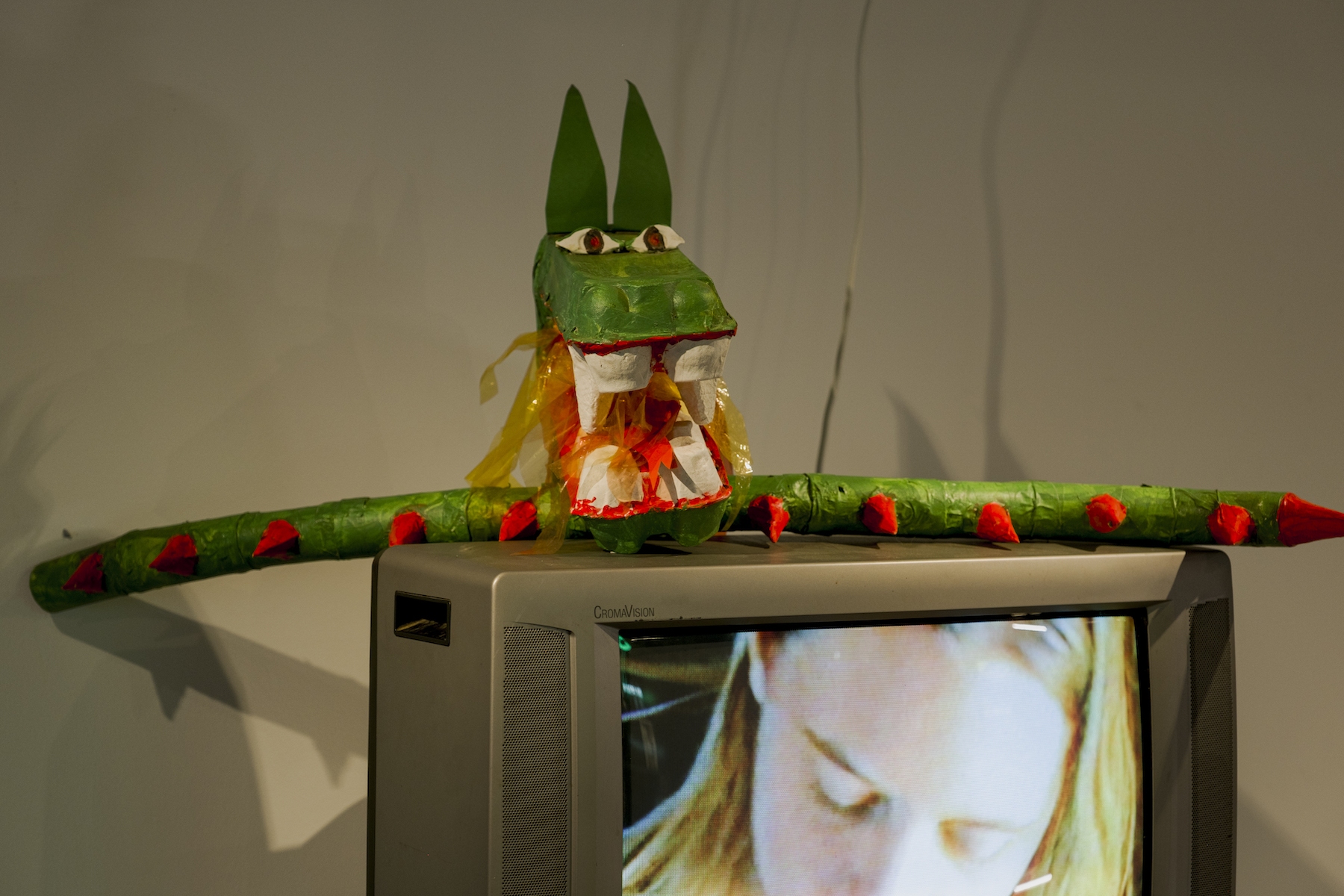Wayne Quilliam’s Silent Strength (2021) opens the National Photographic Portrait Prize. The winning work seized my attention, its subject—Eric Yunkaporta—looking into my eyes with a deep, sorrowful yet resilient gaze. While I can’t know what he was feeling in this moment, portrait photography is exclusive in evoking emotions through the human subject.
This carries through the exhibition. Moreover, last year’s National Photographic Portrait Prize encapsulates the ‘silent strength’ of Australians across the nation. The exhibition reveals the diversity and creativity of the nation through a period of hardships and uncertainty, with three key subjects repeating through the show: First Nation cultures, the effects of the COVID-19 pandemic, and the everyday lived experiences of Australians.
Andrew Rovenko’s The Shuttle (2021) displays Mia’s attempt (as a four-year-old astronaut) to create an imaginary world at a time when Melbourne was under strict lockdown—the longest in the world. Rovenko’s choice of blue-grey colour grading enhances the sense of eeriness created by the metallic surroundings of an old school bus and what seems like rainy weather. Nevertheless the child-bound image of Mia represents hope. Her presence, costume, and bright red shoes speak of an infinite imagination that urges us to turn the mundane world into one filled with dreams.
Two further photographs that conveyed isolation are Nadia Stone’s Birthday girl (2021) and Klint Collier’s Last Day Lockdown (2021). Stone displays a group of three children at a birthday party in a room filled with balloons. In what is typically a happy affair, each child conveys a sense of loneliness. The children are in the same space, but ignorant of each other, their gazes in three different directions. Their distinct facial and bodily expressions signify three feelings that shaped the pandemic: boredom, suffering, and fear of the unknown. By contrast, Collier’s Last day lockdown (2021) illustrates a unique, colourful chaos and larrikinism typical of Australian families at the end of lockdown. The three show a sense of relief as the sun shines onto their disheveled family.
As I progressed through the exhibition, the artworks became increasingly confronting and dark.
Cat Leedon’s Breast cancer, age 37 (2021) depicts a raw and vulnerable confession of the reality for cancer survivors. The subject’s teary eyes and scarred body reminded me that not all breast cancer survivors are brave warriors—some are numb or in pain.
Luther Cora’s Flora and Fauna, Giara: White Cockatoo (2021) presents an enthralling portrait of the artist’s daughter wearing a headdress with native flowers. Although Indigenous Australians were never officially included in the Flora and Fauna Act, the widespread myth that they were points to the truths of ingrained and institutional racism. Via the work, Cora urges the viewer to ponder if we nevertheless classify First Nation people as less than human, if they really have power in decision-making and policy? This piece made me reflect on the current discourse around The Voice and the potential for this to reflect the wishes of all First Nations Australians. Or is racism too deeply embedded in our political system?
I was expecting brighter, even happier imagery in the prize. Instead, I noticed the use of gloomy and desaturated colour grading. I am used to seeing versions of grief, struggle, and sadness in contemporary media; it’s no secret that negativity bias runs strong in news and journalism. Yet, I wondered if my assumptions about the tone of the exhibition were wrong; maybe it was declaring joy and positivity in the middle of disruptive times. This is the point that the National Photographic Portrait Prize 2022 ultimately communicates: that even though life sometimes becomes impossibly difficult to endure, we live on with resilience and strength. The artworks are a timely reminder that courage is not the absence of fear, despair, or grief; it’s the willingness to move on in spite of these—with an abundance of hope and boundless imagination.
Ilham Nafian is an emerging arts worker and writer based on Gubbi Gubbi land (Moreton Bay, Sunshine Coast, Noosa and Gympie region).


